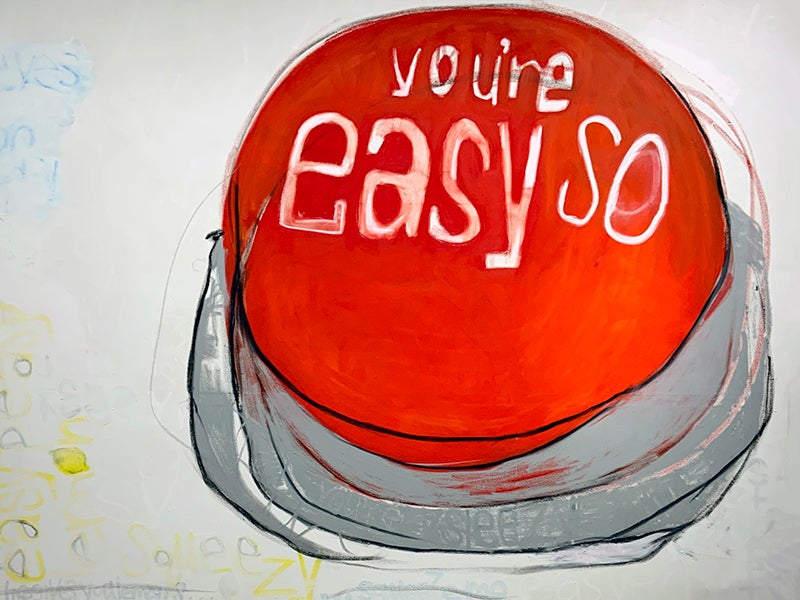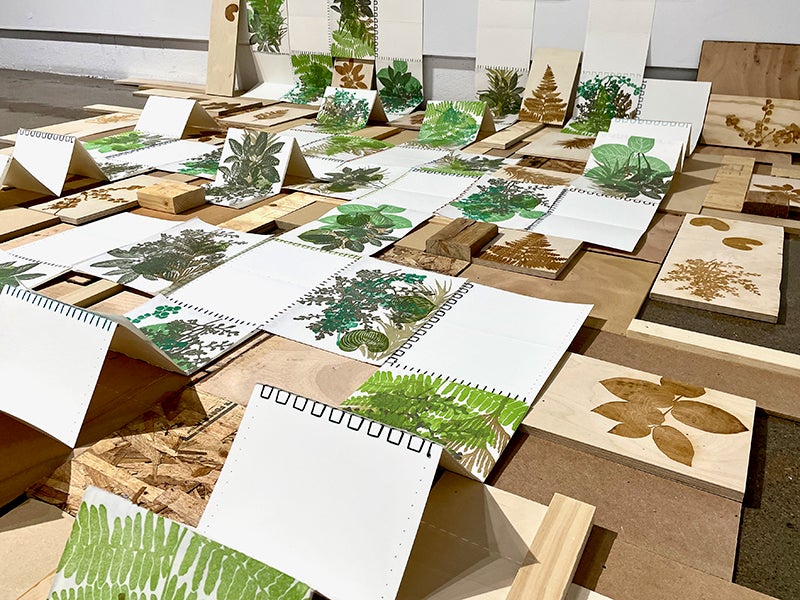Opening reception: Thursday April 7, 5:00–8:00 pm
The Department of Fine Arts and UWAG present the first thesis exhibitions by Master of Fine Arts (MFA) candidates from the graduate program in Fine Arts at the University of Waterloo. MFA Thesis gives the campus and community-at-large an opportunity to see the end result of two years of intensive research and studio production by emerging visual artists.
*Please join us in celebrating the thesis work of our MFA candidates in-person! Visitors are required to show proof or vaccination and comply with campus safety guidelines
 Gallery
One
Gallery
One
Ashley
Guenette
Put
a
finger
down
if
you’ve
ever
been
personally
victimized
by
social
media
algorithms

Put a finger down if you’ve ever been personally victimized by social media algorithms is a collection of generative artworks created in response to algorithmically-determined social media content. Using TikTok, I have deliberately engaged with viral trends that serve as digital microaggressions, such as body and slut shaming, the glorification of mental health disorders such as ADHD, depression, anxiety and eating disorders, and ‘it girl’ routines in order to carefully curate an endless stream of content. Using a variety of mediums, I reinterpret this content in order to offer the viewer a glimpse into this playful yet hateful side of social media, which has been normalized in pop culture and to acknowledge the negative impacts of this content on women-identified and BIPOC individuals and other marginalized groups.
Ashley Guenette is a Franco-Ontarian artist from rural Northern Ontario. Her recent work draws from algorithmically-generated social media content in order to reveal their hidden forms of oppression and reframe them in critical, feminist contexts. Using analogue methods to interpret digital content, her drawings, paintings, and multiples challenge aesthetic conventions of painting while engaging in an ongoing dialogue with its histories. @ashleyguenart
Gallery
Two

Sarah
Galarneau
Seedlings

Seedlings is a bio-structural, garden-like environment in which the boundary between the architectural and the vegetal begins to blur. The conceptual fabric that runs through this body of work is a rhizomatic mesh of ecological, science-fictional, and socio-political themes, forming the theoretical basis of a constructed world of printed, recuperated, and reconstituted modular objects that creep and crawl across the gallery’s surfaces. Seedlings fuses philosophies of ecology with a sense of visionary, liberatory futurity. What stories, theories, actions, and matter will comprise the building blocks of a more ecologically sustainable and socially just future? In this world, the seeds of potentiality emerge from the compost to become the seedlings of versatile structures. Tending to the seeds of radically hopeful ideas means bridging the gaps between fiction and science, between concept and construction. Seedlings are ideas that have taken root and are growing–perhaps in unconventional ways.
Sarah Galarneau is an artist from Tiohtià:ke/Montréal. Primarily working in print media, she is currently extending this practice into the creation of print-based paper sculptures and installations. With one foot in ecological philosophies and the other in visionary fiction, her work explores notions of interconnectivity, cyclicality, biomimicry, potentiality, and futurity; as well as the socio-political implications of such subjects. @sarahgalarneau
Ashley Guenette, You’re So Easy (detail), 2021, acrylic on canvas. Image courtesy of the artist.
Sarah Galarneau, Forest Floor (Homage to Old Growth) (detail), 2021-22, Linocut prints on Masa paper, ArtPrint paper, cotton embroidery thread, laser-cut prints on plywood, gifted floor tiles, various recuperated pieces of MDF, plywood, Masonite, and other pieces of lumber. Image courtesy of the artist.